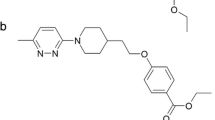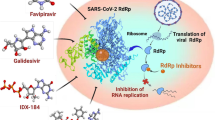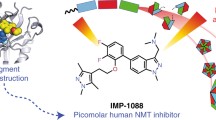Abstract
The challenge in targeting human rhinoviruses (HRV) over the years has been attributed to the wide variety in HRV serotypes. Nonetheless, the search for therapeutic agents against HRV continues unabated. These efforts have been augmented by the recent discovery of the novel benzothiophene derivative shown to inhibit HRV viral replication. Bound to subtype HRV-B14, the compound showed similar inhibitory activity as Pleconaril, a known capsid inhibitor. However, the molecular and structural basis of this inhibition remains unclear. In this in silico report, residue interaction network analysis revealed that the binding of the benzothiophene derivative into the “canyon” region of the active site of HRV-B14 distorts its initially extensively networked and compact residue profile. This was characterized by fewer inter-residue hydrogen bonds, reduced van der Waals interactions, and increased residue flexibility. Interestingly, however, the binding of this benzothiophene derivative decreased the flexibility of the north-south wall around the canyon region possibly impeding the “breathing motion” of HRV-B14, hence its inhibition. Atomistic insights also revealed the cruciality of Tyr152 toward inhibitor binding at HRV-B14. This was justified by the amino acid’s high intermolecular interaction with both inhibitors. Findings provide important structural insights in the inhibitory activity the novel benzothiophene derivative, and reaffirm its promising potential as an alternative capsid inhibitor toward common cold therapy upon further experimental validation.





Similar content being viewed by others
References
Jacobs, S. E., Lamson, D. M., & St. George, K., et al. (2013). Human rhinoviruses. Clinical Microbiology Reviews, 26, 135–162.
Casanova, V., Sousa, F. H., & Stevens, C., et al. (2018). Antiviral therapeutic approaches for human rhinovirus infections. Future Virology, 13, 505–518.
Lewis-Rogers, N., Bendall, M. L., & Crandall, K. A. (2009). Phylogenetic relationships and molecular adaptation dynamics of human rhinoviruses. Molecular Biology and Evolution, 26, 969–981.
Reisdorph, N., Thomas, J. J., & Katpally, U., et al. (2003). Human rhinovirus capsid dynamics is controlled by canyon flexibility. Virology, 314, 34–44.
Panjwani, A., Strauss, M., & Chou, J. J., et al. (2014). Capsid protein VP4 of human rhinovirus induces membrane permeability by the formation of a size-selective multimeric pore. PLoS Pathogens, 10, 1–12.
Wang, L., & Smith, D. L. (2005). Capsid structure and dynamics of a human rhinovirus probed by hydrogen exchange mass spectrometry. Protein Science, 14, 1661–1672.
Kim, J., Jung, Y. K., & Kim, C. et al. (2017). A novel series of highly potent small molecule inhibitors of rhinovirus replication. Journal of Medicinal Chemistry, 60, 5472–5492.
Roy, A., & Post, C. B. (2012). Long-distance correlations of rhinovirus capsid dynamics contribute to uncoating and antiviral activity. Proceedings of National Academy of Sciences of USA, 109, 5271–5276.
Rotbart, H. A. (2000). Antiviral therapy for enteroviruses and rhinoviruses. Antiviral Chemical & Chemotherapy, 11, 261–271.
Kusumaningrum, S., Budianto, E., & Kosela, S., et al. (2014). The molecular docking of 1,4-naphthoquinone derivatives as inhibitors of Polo-like kinase 1 using Molegro Virtual Docker. Journal of Applied Pharmaceutical Science, 4, 47–53.
Pettersen, E. F., Goddard, T. D., & Huang, C. C., et al. (2004). UCSF Chimera—a visualization system for exploratory research and analysis. Journal of Computational Chemistry, 25, 1605–1612.
ChemAxon. Marvin Sketch. 2013. https://www.chemaxon.com/products/marvin/.
Hanwell, M. D., Curtis, D. E., & Lonie, D. C., et al. (2012). Avogadro: an advanced semantic chemical editor, visualization, and analysis platform. Journal of Cheminformatics, 4, 17.
Trott, O., & Olson, A. J. (2010). AutoDock Vina. Journal of Computational Chemistry, 31, 445–461.
Adcock, S. A., & McCammon, J. A. (2006). Molecular dynamics: survey of methods for simulating the activity of proteins. Chemical Reviews, 106, 1589–1615.
Agoni, C., Ramharack, P., & Soliman, M. E. S. (2018). Synergistic interplay of the co-administration of rifampin and newly developed anti-TB drug: could it be a promising new line of TB therapy? Combinatorial Chemistry & High Throughput Screening, 21, 453–460.
Agoni, C., Ramharack, P., & Soliman, M. (2018). Co-inhibition as a strategic therapeutic approach to overcome rifampin resistance in tuberculosis therapy: atomistic insights. Future Medicinal Chemistry, 10, 1665–1675.
Agoni, C., Ramharack, P., & Soliman, M. E. S. (2018). Allosteric inhibition induces an open WPD-loop: a new avenue towards glioblastoma therapy. RSC Advances, 8, 40187–40197.
Nair, P. C., & Miners, J. O. (2014). Molecular dynamics simulations: from structure function relationships to drug discovery. In Silico Pharmacology, 2, 1–4.
Abdullahi, M., Olotu, F. A., & Soliman, M. E. (2018). Solving the riddle: unraveling the mechanisms of blocking the binding of leukotoxin by therapeutic antagonists in periodontal diseases. Journal of Cellular Biochemistry, 119(11), 9364–9379.
Akher, F. B., Farrokhzadeh, A., & Olotu, F. A., et al. (2019). The irony of chirality- unveiling the distinct mechanistic binding and activities of 1-(3-(4-Amino-5-(7-methoxy-5-methylbenzo[b]thiophen-2-yl)-7H-pyrrolo[2,3-d)pyrimidin-7-yl)pyrrolidin-1-yl)prop-2-en-1-one enantiomers as irreversible covalent FGFR4. Organic and Biomolecular Chemistry, 17, 1176–1190.
Wang J., Wang W., & Kollman P. A., et al. Antechamber, an accessory software package for molecular mechanical calculations correspondence to. Journal of American Chemical Society, 222, U403.
Piovesan, D., Minervini, G., & Tosatto, S. (2016). The RING 2.0 web server for high quality residue interaction networks. Nucleic Acids Research, 44, W367–W374.
Shannon, P., Markiel, A., & Owen, O., et al. (2003). Cytoscape: a software environment for integrated models of biomolecular interaction networks. Genome Research, 13, 2498–2504.
Doncheva, N. T., Klein, K., & Domingues, F. S., et al. (2011). Analyzing and visualizing residue networks of protein structures. Trends in Biochemical Sciences, 36, 179–182.
Assenov, Y., Ramírez, F., & Schelhorn, S. E. S. E., et al. (2008). Computing topological parameters of biological networks. Bioinformatics, 24, 282–284.
Ylilauri, M., & Pentikäinen, O. T. (2013). MMGBSA as a tool to understand the binding affinities of filamin-peptide interactions. Journal of Chemical Information and Modeling, 53, 2626–2633.
Phelps, D. K., Speelman, B., & Post, C. B. (2000). Theoretical studies of viral capsid proteins. Current Opinion in Structural Biology, 10, 170–173.
Phelps, D. K., & Post, C. B. (2009). Molecular dynamics investigation of the effect of an antiviral compound on human rhinovirus. Protein Science, 8, 2281–2289.
Amitai, G., Shemesh, A., & Sitbon, E., et al. (2004). Network analysis of protein structures identifies functional residuesJournal of Molecular Biology, 344, 1135–1146.
Vishveshwara, S., Ghosh, A., & Hansia, P. (2009). Intra and inter-molecular communications through protein structure network. Current Protein and Peptide Science, 10, 146–160.
del Sol, A., Fujihashi, H., & Amoros, D., et al. (2006). Residues crucial for maintaining short paths in network communication mediate signaling in proteins. Molecular Systems Biology, 2, 2006.0019.
Moonsamy, S., Bhakat, S., & Walker, R. C., et al. (2016). Single active site mutation causes serious resistance of HIV reverse transcriptase to lamivudine: insight from multiple molecular dynamics simulations. Cell Biochemistry and Biophysics, 74, 35–48.
Ndagi, U., Mhlongo, N. N., & Soliman, M. E. (2017). The impact of Thr91 mutation on c-Src resistance to UM-164: molecular dynamics study revealed a new opportunity for drug design. Molecular BioSystems, 13, 1157–1171.
Yan, W., Zhou, J., & Sun, M., et al. (2014). The construction of an amino acid network for understanding protein structure and function. Amino Acids., 46, 1419–1439.
Xue, W., Jin, X., & Ning, L., et al. (2012). Exploring the molecular mechanism of cross-resistance to HIV-1 integrase strand transfer inhibitors by molecular dynamics simulation and residue interaction network analysis. Journal of Chemical Information and Modeling, 53, 210–222.
Cournia, Z., Allen, B., & Sherman, W. (2017). Relative binding free energy calculations in drug discovery: recent advances and practical considerations. Journal of Chemical Information and Modeling, 5, 2911–2937.
Zhang, Y., Simpson, A. A., & Ledford, R. M., et al. (2004). Structural and virological studies of the stages of virus replication that are affected by antirhinovirus compounds. Journal of Virology, 78, 11061–11069.
Acknowledgements
The authors appreciate the College of Health Sciences, University of KwaZulu-Natal for financial and infrastructural support while we also thank the Center for High-Performance Computing (CHPC, www.chpc.ac.za) Cape-Town, South Africa for providing computational resources.
Author information
Authors and Affiliations
Corresponding author
Ethics declarations
Conflict of Interest
The authors declare that they have no conflict of interest.
Additional information
Publisher’s note Springer Nature remains neutral with regard to jurisdictional claims in published maps and institutional affiliations.
Supplementary Information
Rights and permissions
About this article
Cite this article
Agoni, C., Ramharack, P., Munsamy, G. et al. Human Rhinovirus Inhibition Through Capsid “Canyon” Perturbation: Structural Insights into The Role of a Novel Benzothiophene Derivative. Cell Biochem Biophys 78, 3–13 (2020). https://doi.org/10.1007/s12013-019-00896-z
Received:
Accepted:
Published:
Issue Date:
DOI: https://doi.org/10.1007/s12013-019-00896-z




